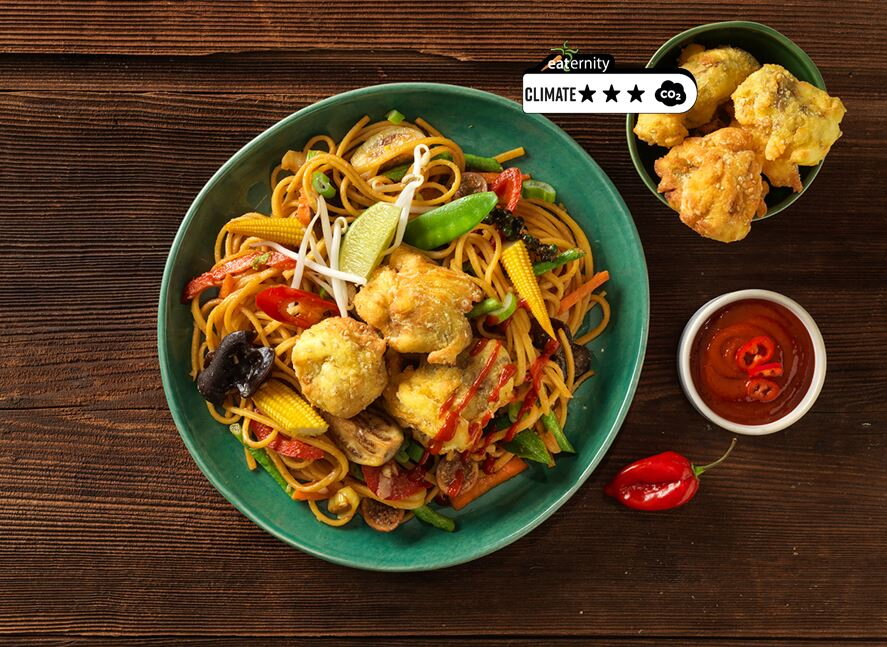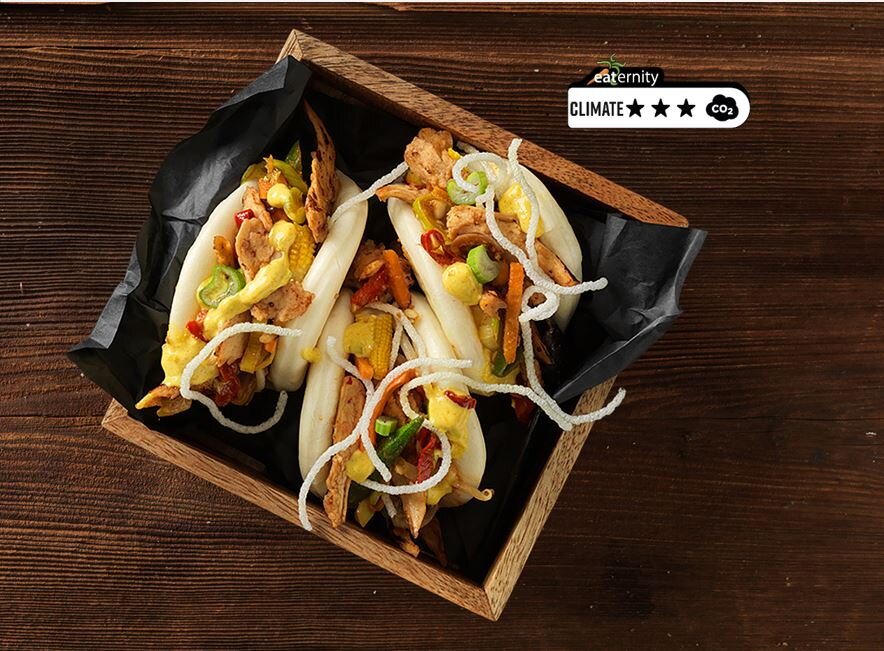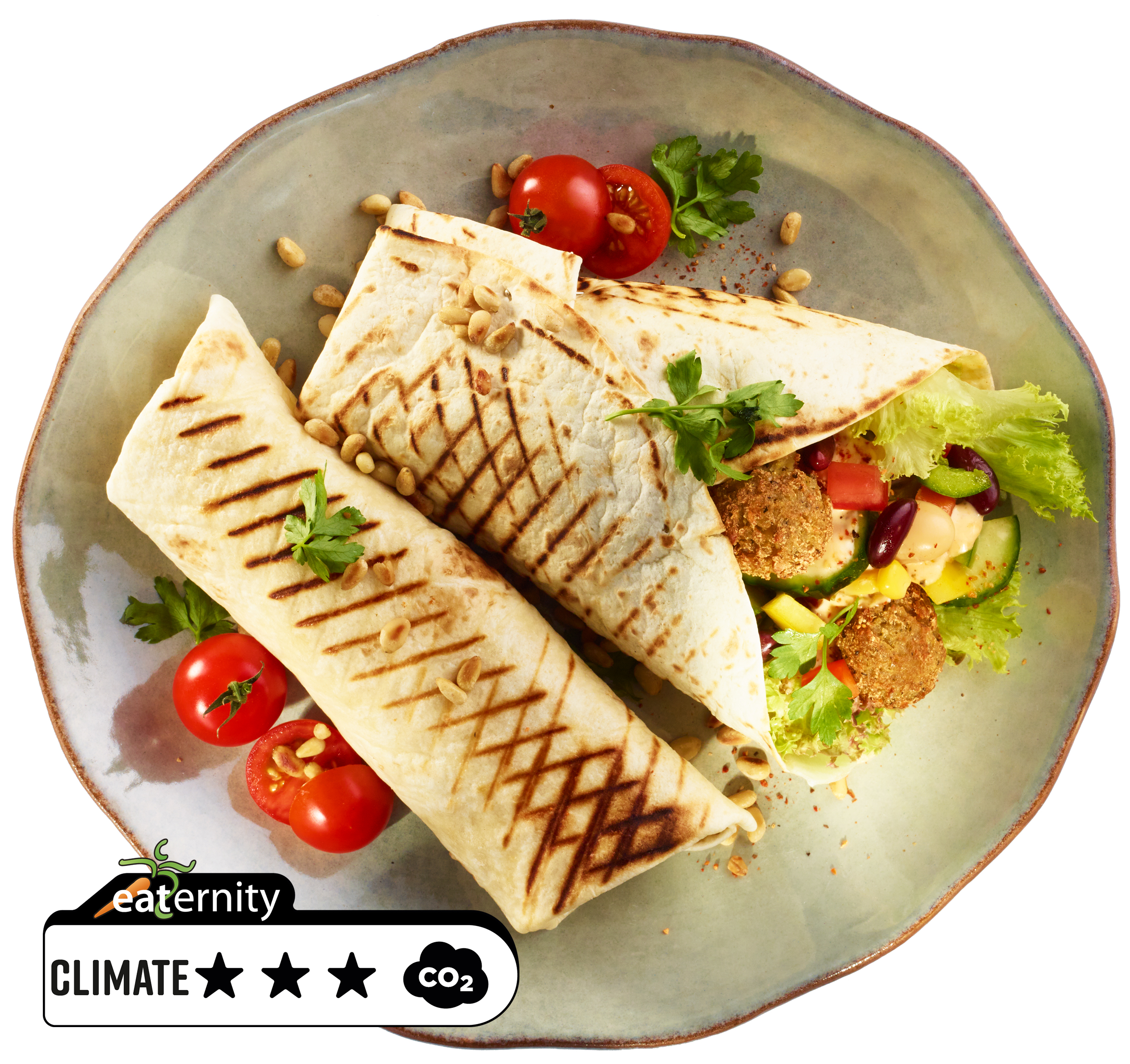The CO2 score is obtained from the conversion of the carbon footprint for any given food into an easy-to-read scale. The carbon footprint represents the greenhouse gas emissions generated throughout the food’s entire lifecycle, and is normally expressed in terms of tonnes of CO2 equivalent.
The carbon footprint is directly related to environmental damage, and thus has an effect on climate change. By choosing recipes with three stars (lower carbon footprint), you can make a conscious choice in favour of more sustainable eating.
The score displayed also takes account of menu portion size, enabling comparability with a score of between one and three stars. Three stars means that we have achieved the goal of sustainable eating.
We work with the Swiss company Eaternity, founded in 2014, in order to calculate the CO2 score. Eaternity supports organisations throughout the world in calculating carbon footprints for different types of food.
Life cycle analyses (LCAs) are used in order to calculate the carbon footprint of food. The method includes a database featuring a large number of parameters concerning food, such as organic farming outdoors as opposed to production in greenhouses. A calculation has been carried out by Eaternity for all of the approximately 1,500 ingredients in our recipe database. All recipe ingredients are linked to the Eaternity database via an electronic interface and are thus constantly and automatically updated.
Eaternity’s method has a basis in science and the data are constantly improved thanks to the input of new data. Further information can be found at: http://edb.eaternity.org
Recipes can be prepared using a large number of ingredients from the local area or nationwide. However, some other products need to be imported.
- Consider, for example, the category of fish: the abbreviation “NO” is provided between brackets after the item name for smoked salmon. Norway is logged as the origin in the system and, alongside salmon production, Eaternity also takes account of transportation from Norway to central Europe.
- Meat products are sourced from Switzerland as a general rule, unless an indication of origin appears after the item name, such as (NZ) for lamb from New Zealand.
- Milk products are normally sourced from Switzerland, although there are some exceptions. Accordingly, Eaternity also takes importation into account, such as for Gorgonzola DOP.
- Seasonal fruit and vegetables are generally sourced from Switzerland, if the products can be grown here. Eaternity also considers imported seasonal and non-seasonal food, and thus increases the CO2 figure for transportation accordingly.
- Exotic items are automatically classified as imported items. Eaternity is aware of their supply chains and factors these into calculations.
After all this effort, it is even possible to do climate-neutral cooking with these recipes?
No, every food has a carbon footprint. This is even the case for cold water from the tap, and naturally also the “climate-neutral” bicycle courier, as the rider providing the “human engine” ultimately runs on food, which needs to be produced.


















